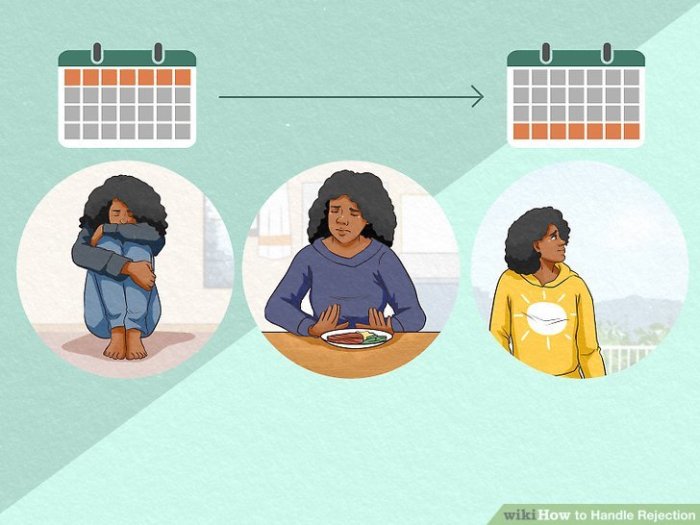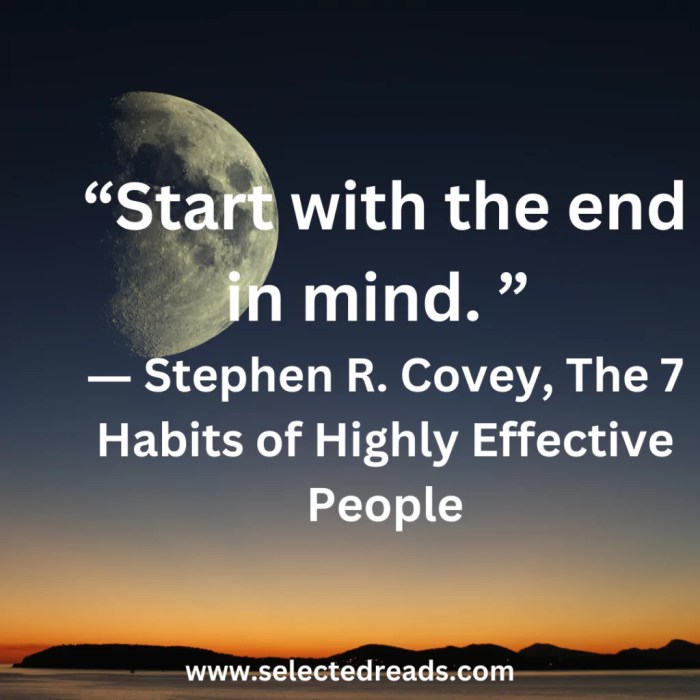7 tiny changes that can drastically improve your life. This isn’t about massive overhauls; it’s about small, manageable adjustments that, over time, create significant positive shifts. We’ll explore seven simple yet powerful strategies, from prioritizing tasks to nurturing relationships, and discover how seemingly insignificant changes can lead to a more fulfilling and productive life. Get ready to unlock your potential with these practical and actionable tips.
This guide delves into seven specific areas for improvement, each with actionable steps and examples. Expect a blend of theory and practical application, helping you translate these ideas into tangible changes in your daily routine. The focus is on creating sustainable habits that will enhance various aspects of your life, from your personal relationships to your physical well-being.
Introduction to Tiny Life Changes: 7 Tiny Changes That Can Drastically Improve Your Life

Tiny changes, in the context of improving life, are small, incremental adjustments to daily routines or habits that, when consistently implemented, lead to significant positive outcomes over time. These aren’t drastic overhauls, but rather subtle shifts that become ingrained patterns, ultimately impacting overall well-being and progress. They’re the building blocks of lasting improvements, rather than quick fixes.The compounding effect of small improvements is a powerful force.
Imagine a single drop of water consistently dripping onto a rock. Over time, the relentless, though seemingly insignificant, action carves out a path. Similarly, consistently making small, positive changes in our lives—like exercising for 15 minutes daily or reading for 30 minutes before bed—can create substantial and lasting improvements in our health, productivity, and happiness.My own experience with this concept is profound.
For years, I struggled with procrastination. I identified a tiny change: setting a timer for 15 minutes of focused work. Initially, it felt like a minor inconvenience. However, over time, those 15-minute blocks of focused work compounded into hours of productivity, transforming my workflow and ultimately leading to more significant achievements.This article explores seven such tiny changes that can lead to substantial improvements in various aspects of life.
These changes aren’t revolutionary, but they are proven strategies that, when consistently applied, can positively transform your experiences. Let’s delve into the specifics:
Seven Tiny Changes for a Better Life
These seven tiny changes represent actionable steps towards a more fulfilling and productive life. Each change, while seemingly insignificant on its own, holds the potential for substantial impact when integrated into your daily routine.
| Change | Description | Impact | Example |
|---|---|---|---|
| Mindful Morning Routine | Establish a short, focused morning routine that sets the tone for the day. | Reduces stress, improves focus, and increases productivity. | Taking 5 minutes to meditate, journaling, or simply enjoying a quiet cup of tea before starting your day. |
| Incremental Exercise | Incorporate short bursts of physical activity into your daily schedule. | Improves physical health, reduces stress, and boosts energy levels. | Taking the stairs instead of the elevator, walking during your lunch break, or doing 10 minutes of stretching. |
| Targeted Reading | Dedicate a specific time each day for reading, focusing on a subject you enjoy. | Enhances knowledge, improves focus, and expands perspectives. | Reading for 15-30 minutes before bed on a topic you find engaging. |
| Small Savings Habit | Set aside a small amount of money each day or week. | Builds financial security and fosters a sense of control over finances. | Putting $5 or $10 into a savings account daily. |
| Active Listening | Actively listen to others, engaging fully in conversations. | Strengthens relationships, fosters empathy, and improves communication skills. | Making eye contact, asking clarifying questions, and summarizing what others say to ensure understanding. |
| Gratitude Practice | Take time to reflect on things you’re grateful for. | Increases positivity, improves mental well-being, and fosters appreciation. | Keeping a gratitude journal, expressing thanks to others, or simply taking a moment to appreciate a beautiful aspect of your surroundings. |
| Digital Detox | Limit screen time and engage in non-digital activities. | Reduces stress, improves focus, and promotes mental well-being. | Setting aside specific times for screen-free activities like spending time in nature, reading a book, or engaging in hobbies. |
Prioritization and Time Management
Prioritizing tasks and effectively managing time are crucial for reducing stress and maximizing productivity. A well-structured approach to time management empowers us to achieve more in less time, fostering a sense of accomplishment and control over our schedules. This often involves identifying and eliminating time-wasting activities, a skill that frees up valuable time for tasks that truly matter.Effective time management isn’t about squeezing more into the day, but about making the most of the time we have.
It’s about strategically allocating our efforts to high-priority activities, leading to a more fulfilling and productive experience. This approach significantly impacts our well-being by reducing stress associated with feeling overwhelmed or behind schedule.
Ever wonder how a few small adjustments can completely transform your life? Making those 7 tiny changes is key, and that includes nurturing a long-distance relationship! Check out these 21 best tips making long distance relationship work here for some seriously helpful strategies. Ultimately, these small, intentional steps can make a big difference in any area of your life, from relationships to productivity.
Importance of Prioritization
Prioritizing tasks is essential for focusing on what truly matters. By identifying high-priority tasks, we can allocate our energy and resources to activities that will yield the greatest return. This focused approach helps avoid getting bogged down in less important tasks, fostering a sense of accomplishment and reducing feelings of being overwhelmed. Prioritization helps to maintain clarity and direction in achieving goals.
Methods for Effective Time Management
Effective time management encompasses various techniques, each tailored to specific needs and preferences. One widely recognized method is the Pomodoro Technique. This technique involves working in focused intervals, typically 25 minutes, followed by short breaks. This structured approach promotes concentration and reduces mental fatigue.
The Pomodoro Technique
The Pomodoro Technique is a time management method that involves working in focused intervals, typically 25 minutes, followed by a 5-minute break. Repeating this cycle four times results in a longer, 15-minute break. This structured approach helps maintain concentration and reduces mental fatigue. The technique encourages a balance between focused work and rest, which can improve overall productivity.
Identifying and Eliminating Time-Wasting Activities
Identifying and eliminating time-wasting activities is crucial for effective time management. This often involves recognizing patterns of procrastination or unproductive behaviors. Examples of time-wasting activities include excessive social media use, aimless browsing, or getting distracted by irrelevant tasks. By consciously identifying and eliminating these activities, we can reclaim valuable time for more productive pursuits.
Structured Plan for Incorporating Time Management Techniques into Daily Routines
Creating a structured plan for incorporating time management techniques into daily routines is essential for consistency and long-term success. This plan should include scheduling specific blocks of time for high-priority tasks and allocating breaks for rest and rejuvenation. It is vital to review and adjust the plan regularly to adapt to changing priorities and demands. Consistency is key to successful implementation.
Ever wanted to make some positive changes in your life? Small adjustments can have a big impact! For instance, consider how your reliance on social media might be affecting your self-esteem. Checking out this article on 4 reasons why people who don’t rely on social media are more confident could offer some insights. Ultimately, focusing on inner peace and self-improvement through small, consistent changes will lead to a better, more fulfilling life.
Prioritization Leading to Reduced Stress and Increased Productivity
Prioritization can lead to reduced stress and increased productivity. By focusing on the most critical tasks, individuals can avoid feeling overwhelmed and maintain a sense of control over their schedules. This structured approach to task completion fosters a sense of accomplishment and boosts confidence.
Example Time Management Plan
| Task | Priority Level | Estimated Time | Action Steps |
|---|---|---|---|
| Prepare presentation for meeting | High | 2 hours | Research, Artikel, write script, practice delivery |
| Respond to emails | Medium | 1 hour | Categorize, prioritize, draft responses, send |
| Exercise | High | 30 minutes | Choose activity, schedule time, complete |
| Plan for next week | High | 30 minutes | Review tasks, set priorities, schedule appointments |
Mindfulness and Self-Care Practices
Embarking on a journey of small, impactful changes requires understanding the crucial role of mindfulness and self-care. These practices are not luxuries but essential components for sustained well-being. They equip us to navigate the challenges of daily life with resilience and a sense of calm, fostering a positive feedback loop that fuels personal growth.Mindfulness, at its core, is the practice of paying attention to the present moment without judgment.
This simple act can significantly improve our overall quality of life, reducing stress and increasing emotional regulation. Self-care, meanwhile, encompasses actions that nourish our physical, mental, and emotional well-being. By integrating these practices into our routines, we build a foundation for enduring happiness and productivity.
Benefits of Mindfulness in Daily Life
Mindfulness fosters a deeper connection with ourselves and our surroundings. It enhances our ability to observe our thoughts and emotions without getting swept away by them. This awareness allows us to respond to situations with greater clarity and composure, rather than reacting impulsively. This, in turn, leads to a reduction in stress and anxiety.
Mindfulness Exercises
Numerous mindfulness exercises can be integrated into daily life. Meditation, a well-known practice, involves focusing on the breath or a specific object to quiet the mind. Deep breathing exercises, such as box breathing, are equally effective. These techniques involve consciously inhaling and exhaling in a rhythmic pattern, calming the nervous system and reducing feelings of stress and anxiety.
Progressive muscle relaxation is another method, focusing on tensing and releasing different muscle groups to release physical tension.
Incorporating Mindfulness into Daily Routines
Even busy individuals can incorporate mindfulness into their routines. A few minutes of meditation first thing in the morning or during a lunch break can significantly impact daily well-being. Taking a moment to appreciate the simple act of drinking a glass of water or noticing the sights and sounds around you can foster a greater sense of presence.
Integrating mindfulness into daily tasks, like brushing your teeth or walking, can make these moments more mindful and fulfilling.
Small tweaks can make a big difference in your daily life. Thinking about 7 tiny changes to improve your life? Learning crucial life skills like time management or financial literacy, concepts often highlighted in resources like 15 important things kids should know age 15 , can be applied to improve your daily habits. Ultimately, these small changes are key to a more fulfilling and successful life, whether you’re 15 or 35.
Importance of Self-Care Practices
Self-care practices are vital for sustaining energy and maintaining optimal well-being. Adequate sleep allows the body and mind to recover, while a balanced diet provides the nutrients necessary for optimal function. Regular breaks throughout the day are crucial for preventing burnout and maintaining focus. These elements are essential for effectively managing stress and fostering resilience.
Stress Management Techniques, 7 tiny changes that can drastically improve your life
Stress is an inevitable part of life, but effective stress management techniques can help mitigate its negative effects. These include practices like mindfulness meditation, deep breathing exercises, and engaging in activities that promote relaxation, such as listening to music or spending time in nature. Identifying and managing stressors, both internal and external, can also help in mitigating their impact.
Journaling can be a powerful tool for processing emotions and thoughts, enabling better understanding and coping mechanisms.
Table of Mindfulness and Self-Care Practices
| Practice | Description | Benefits | Frequency |
|---|---|---|---|
| Mindfulness Meditation | Focusing on the breath or a specific object to quiet the mind. | Reduces stress, increases self-awareness, improves focus. | 15-30 minutes daily, or as needed. |
| Deep Breathing Exercises | Consciously inhaling and exhaling in a rhythmic pattern. | Calms the nervous system, reduces anxiety, promotes relaxation. | Multiple times daily, especially during stressful situations. |
| Adequate Sleep | Ensuring sufficient hours of quality sleep. | Promotes physical and mental recovery, enhances cognitive function, boosts mood. | 7-9 hours nightly. |
| Nutritious Diet | Consuming a balanced diet rich in fruits, vegetables, and whole grains. | Provides essential nutrients for optimal physical and mental health, improves energy levels. | Regular meals throughout the day. |
Communication and Relationship Enhancement
Strong relationships are built on solid communication foundations. Effective communication isn’t just about exchanging words; it’s about understanding, empathy, and respect. This involves actively listening to others, expressing your needs clearly, and finding constructive ways to resolve disagreements. Improving communication skills can lead to deeper connections, greater trust, and more fulfilling relationships.Cultivating effective communication goes beyond just talking; it’s about truly connecting with others on a deeper level.
This includes understanding not just the spoken words but also the underlying emotions and intentions. By mastering communication techniques, we can foster healthier and more satisfying relationships in all aspects of our lives, from personal to professional.
Clear and Effective Communication in Relationships
Open and honest communication is the cornerstone of any successful relationship. It involves expressing thoughts and feelings openly and honestly, while also actively listening to and validating the perspectives of others. This process fosters trust, understanding, and mutual respect, allowing for a deeper connection.
Active Listening Techniques
Active listening is a crucial skill for effective communication. It involves fully concentrating on what the other person is saying, both verbally and nonverbally. This includes paying attention to their body language, tone of voice, and the emotions behind their words. By actively listening, we demonstrate respect and show that we value their perspective. It also allows for a deeper understanding of the other person’s viewpoint.
Constructive Expression of Needs
Expressing your needs and desires is essential for maintaining healthy relationships. This involves articulating your needs in a clear, concise, and respectful manner. Avoid accusatory language or placing blame. Instead, focus on expressing your feelings and needs using “I” statements. This approach fosters a collaborative atmosphere and promotes understanding.
Conflict Resolution Strategies
Disagreements are inevitable in any relationship. However, the way we handle conflicts can significantly impact the strength of the relationship. Effective conflict resolution strategies involve acknowledging differing viewpoints, actively listening to understand the other person’s perspective, and working collaboratively to find solutions that address everyone’s needs. This process involves finding common ground and compromising when necessary.
Building Healthy Boundaries in Relationships
Healthy boundaries are essential for maintaining a balanced and fulfilling relationship. These boundaries protect our emotional and physical well-being, while also respecting the needs and boundaries of others. Setting and maintaining boundaries is a crucial step in building a healthy and respectful relationship dynamic.
Table: Communication Styles and Techniques
| Communication Style | Technique | Impact | Example Scenario |
|---|---|---|---|
| Active Listening | Pay close attention to the speaker, maintain eye contact, and ask clarifying questions. Reflect back what you heard to ensure understanding. | Shows respect, fosters empathy, and promotes understanding. | A partner is upset about a work issue. You actively listen, summarize their concerns, and validate their feelings. |
| Clear Expression of Needs | Use “I” statements to express your feelings and needs without blaming the other person. Be specific and avoid generalizations. | Promotes clarity, reduces misunderstandings, and fosters collaboration. | You need more time for yourself. You say, “I feel overwhelmed lately and need more time for personal activities.” |
| Constructive Feedback | Focus on specific behaviors, offer suggestions for improvement, and frame feedback in a positive and helpful manner. | Encourages growth, strengthens relationships, and avoids damaging the relationship. | Your friend is constantly late. You say, “I noticed you’ve been late to our meetings recently. Perhaps we could agree on a specific time to start?” |
| Conflict Resolution | Acknowledge differing viewpoints, listen empathetically, and collaboratively seek solutions that address everyone’s needs. Compromise where necessary. | Strengthens the relationship, fosters mutual understanding, and promotes problem-solving. | You and your partner disagree about how to spend a vacation. You both compromise by looking for activities that appeal to both of you. |
Healthy Habits and Physical Well-being

Investing in healthy habits is paramount for overall well-being. It’s not just about feeling good physically; it’s about fostering a foundation for a more resilient and fulfilling life. A strong body supports a strong mind, and small, consistent changes can yield significant improvements over time. Prioritizing physical health, in turn, positively impacts mental clarity, emotional stability, and productivity.Healthy habits aren’t about deprivation; they’re about mindful choices that nourish your body and mind.
Integrating these habits into your daily routine, even in small increments, creates a positive feedback loop, reinforcing the benefits and making them a sustainable part of your lifestyle. This approach emphasizes the importance of consistency rather than drastic, often unsustainable, changes.
Significance of Healthy Habits
Healthy habits are the cornerstones of a fulfilling life. They aren’t merely about aesthetics; they’re about functional well-being, enhancing energy levels, and improving mood. Regular exercise, balanced nutrition, and sufficient hydration contribute to a robust immune system, aiding in the prevention of various health issues. This proactive approach to health fosters a stronger sense of self-control and empowers individuals to take ownership of their well-being.
Importance of Regular Exercise
Regular exercise is crucial for maintaining physical and mental health. It strengthens the cardiovascular system, improves bone density, and helps manage weight effectively. The physical benefits extend beyond these basics; exercise is linked to improved cognitive function, reduced stress, and better sleep quality. Finding activities you enjoy, whether it’s a brisk walk, a yoga class, or a game of basketball, increases the likelihood of sustained participation.
Proper Nutrition and Hydration
Nourishing your body with a balanced diet is fundamental to overall health. A diet rich in fruits, vegetables, lean proteins, and whole grains provides the essential nutrients your body needs to function optimally. Proper hydration is equally vital, keeping bodily functions running smoothly and aiding in nutrient absorption. Choosing whole foods over processed ones and paying attention to portion sizes are key aspects of a healthy diet.
Connection Between Physical and Mental Well-being
The connection between physical and mental well-being is undeniable. Physical activity releases endorphins, which have mood-boosting effects. A healthy diet provides the building blocks for a sharp mind and stable mood. Adequate sleep, often intertwined with these factors, further reinforces the positive impact on mental health. This interconnectedness highlights the importance of treating your body as a temple.
Incorporating Healthy Habits into Daily Life
Start small. Adding 15 minutes of exercise most days of the week is more achievable than aiming for an hour all at once. Likewise, swapping one sugary drink for a glass of water is a manageable first step towards healthier hydration. Gradually increasing the frequency and intensity of your activities, alongside mindful food choices, fosters lasting habits.
Small Diet Changes for Improved Energy and Mood
Substituting processed snacks with fruits or vegetables can significantly boost energy levels and positively influence mood. Reducing refined sugars and increasing the intake of complex carbohydrates provides sustained energy and prevents the energy crashes often associated with sugary foods. Mindful eating, paying attention to hunger and fullness cues, also plays a critical role in optimizing energy levels and mood.
Habit Implementation Plan
| Habit | Benefits | Implementation Steps | Monitoring Metrics |
|---|---|---|---|
| Regular Exercise (30 minutes, 3 times/week) | Improved cardiovascular health, stress reduction, increased energy | Choose activities you enjoy. Start with shorter durations and gradually increase. Schedule exercise into your calendar. | Track exercise duration and frequency. Note any changes in energy levels and mood. |
| Balanced Diet | Provides essential nutrients, promotes energy levels, supports physical health | Focus on whole foods, fruits, vegetables, lean proteins, and complex carbohydrates. Limit processed foods and sugary drinks. | Keep a food journal to track intake. Monitor weight and energy levels. |
| Hydration (8 glasses of water daily) | Supports bodily functions, improves cognitive function, enhances mood | Carry a water bottle and sip throughout the day. Replace sugary drinks with water. | Track water intake using a water bottle with markings or an app. |
Learning and Personal Growth
Embarking on a journey of continuous learning and personal development is paramount to a fulfilling life. It’s not just about accumulating knowledge, but also about refining skills, expanding perspectives, and fostering a growth mindset. This ongoing process allows us to adapt to changing circumstances, pursue our passions, and ultimately, live more enriched lives.
The Importance of Continuous Learning
Personal growth isn’t a destination, but a continuous process. It involves embracing new challenges, seeking out opportunities for improvement, and adapting to evolving circumstances. By consistently learning and developing new skills, we enhance our problem-solving abilities, boost our confidence, and broaden our horizons. This process fosters a proactive approach to life, empowering us to navigate complexities and achieve our goals.
Methods for Acquiring New Knowledge and Skills
Numerous avenues exist for acquiring new knowledge and skills. Formal education, whether through online courses or traditional universities, provides structured learning environments. Books, articles, and documentaries offer diverse perspectives and insights. Workshops and seminars offer hands-on experiences and specialized training. Mentorship and networking provide invaluable guidance and connections.
Finally, practical experience through projects and real-world applications solidify understanding and build crucial skills.
Setting Realistic Goals for Personal Growth
Setting realistic goals is crucial for sustainable personal growth. Unrealistic expectations can lead to frustration and demotivation. Break down larger goals into smaller, manageable steps. Focus on achievable milestones rather than overwhelming objectives. Track progress, acknowledge achievements, and adjust strategies as needed.
Regular self-assessment is key to ensuring goals remain relevant and aligned with personal aspirations.
The Link Between Learning and Increased Confidence
Learning directly correlates with increased confidence. Mastering a new skill or gaining knowledge in a specific area instills a sense of competence and accomplishment. This, in turn, builds self-esteem and empowers individuals to tackle new challenges with greater assurance. Confidence gained through learning extends beyond specific areas, often impacting overall well-being and decision-making.
Incorporating Learning into Daily Routines
Integrating learning into daily routines is essential for sustained growth. Allocate dedicated time for reading, attending workshops, or pursuing online courses. Find opportunities for learning in everyday activities, such as watching educational videos or podcasts while commuting. Incorporate learning into hobbies, exploring new techniques or perspectives. Regularly seeking out new information or experiences will cultivate a growth mindset.
Strategies for Learning
| Learning Area | Method | Time Commitment | Resources |
|---|---|---|---|
| Coding | Online courses (e.g., Coursera, Udemy), coding bootcamps | Variable (depends on course intensity); 1-2 hours/day | Internet access, textbooks, online communities |
| Public Speaking | Workshops, online courses, practicing presentations | Variable (depends on course duration); 1-3 hours/week | Public speaking books, online resources, feedback from peers |
| Foreign Language | Language learning apps (e.g., Duolingo, Babbel), immersion | 15-30 minutes/day | Language learning resources, language exchange partners |
| Financial Literacy | Online courses, financial advisors, books | Variable (depends on course depth); 1-2 hours/week | Finance websites, investment guides, financial institutions |
Gratitude and Positive Thinking
Cultivating gratitude and a positive mindset are powerful tools for enhancing well-being and achieving personal goals. This approach fosters resilience, reduces negativity, and provides a framework for appreciating the good in life, no matter the circumstances. Focusing on the positive aspects of your experiences, big or small, can significantly impact your overall happiness and outlook.Gratitude isn’t just about acknowledging the pleasant; it’s about actively appreciating the everyday gifts and opportunities that often go unnoticed.
By consciously focusing on what we have, we shift our perspective from what’s lacking to what’s abundant, fostering a more fulfilling and positive experience. This proactive approach to well-being can have a ripple effect, positively influencing our relationships, work performance, and overall quality of life.
The Power of Gratitude
Gratitude plays a pivotal role in boosting overall well-being. Studies have consistently shown a strong correlation between expressing gratitude and increased happiness, reduced stress, and improved physical health. By acknowledging the good in our lives, we train our brains to focus on the positive, fostering a more optimistic outlook.
Methods for Practicing Gratitude
Regularly expressing appreciation, through journaling or other methods, is crucial for cultivating a grateful mindset. These practices create a positive feedback loop, strengthening the neural pathways associated with happiness and contentment. Simple acts of expressing gratitude to others, like sending a thank-you note or offering a compliment, can also have a profound impact on both the giver and the receiver.
Gratitude and Positive Thinking for Achieving Goals
Positive thinking is intrinsically linked to achieving goals. A positive mindset fuels motivation and resilience, enabling individuals to persevere through challenges and setbacks. When faced with obstacles, a positive outlook fosters a proactive approach, enabling individuals to adapt and find creative solutions. By cultivating positive thoughts and beliefs, individuals can enhance their ability to navigate challenges and move forward with greater confidence.
Improving Resilience and Reducing Negativity
Gratitude can significantly improve resilience, the ability to bounce back from adversity. By focusing on the positive aspects of a situation, individuals can develop a stronger sense of control and perspective. This approach helps in managing negative emotions and thoughts, promoting a more balanced and resilient mindset. It’s a proactive strategy for building a stronger foundation against negative influences.
Strategies for Fostering a Positive Mindset
Cultivating a positive mindset involves consistently focusing on the good aspects of life. This involves consciously shifting attention away from negative thoughts and towards positive affirmations and self-compassion. Practicing mindfulness, engaging in activities that bring joy, and maintaining supportive relationships are key components in nurturing a positive mindset. Regularly engaging in activities that bring joy and fulfillment can contribute significantly to a positive outlook.
Gratitude Practices Table
| Gratitude Practice | Benefits | Frequency | Example |
|---|---|---|---|
| Gratitude Journaling | Increased positivity, reduced stress, improved sleep | Daily or Weekly | Write down 3 things you’re grateful for each day. |
| Expressing Appreciation | Strengthened relationships, increased happiness | Regularly | Send a thank-you note to a friend or family member. |
| Mindful Reflection | Increased self-awareness, deeper appreciation | Daily or Weekly | Take a few moments to reflect on positive experiences. |
| Acts of Kindness | Increased happiness, connection with others | Regularly | Offer a helping hand to someone in need. |
Creating a Supportive Environment
A supportive environment is crucial for achieving personal and professional goals. It fosters a sense of belonging, encourages growth, and provides a buffer against stress. When surrounded by people who believe in us and offer encouragement, we are more likely to persevere through challenges and ultimately succeed. This supportive network extends beyond immediate family and friends to include mentors and even colleagues who can provide guidance and support.A supportive environment is not merely the absence of negativity, but the active presence of encouragement, understanding, and constructive feedback.
It’s about having a system in place that allows us to flourish, both individually and collectively. This can manifest in various forms, from a loving family dynamic to a collaborative work environment, and it is a key factor in navigating life’s complexities and achieving lasting success.
Building a Supportive Network
Establishing a supportive network is an active process that requires intentionality and effort. It’s not about passively waiting for support to appear, but proactively cultivating relationships with individuals who can offer encouragement and guidance.
- Identifying Potential Supporters: Consider individuals who have demonstrated a genuine interest in your well-being, who offer constructive criticism, and who celebrate your successes. Family, close friends, mentors, and colleagues can all play a role in this network. Think about who in your life consistently offers encouragement, practical advice, or a listening ear.
- Nurturing Existing Relationships: Strengthening existing relationships is paramount. Regular communication, active listening, and expressing gratitude are vital for maintaining strong connections. Making time for meaningful interactions with loved ones and colleagues fosters a sense of belonging and support.
- Seeking Out Mentors: Mentors can provide invaluable guidance and support, especially when navigating new challenges or career transitions. Mentorship programs can be formal or informal, and the key is finding someone who can offer wisdom and support based on their experience.
Creating a Positive Environment
A supportive environment extends beyond relationships; it encompasses the physical space where we live and work. Creating a nurturing environment influences our mental and emotional well-being.
- Home Environment: A clean, organized, and aesthetically pleasing home can significantly impact our mood and productivity. Creating a calming atmosphere through mindful decor choices, incorporating natural light, and maintaining a clutter-free space promotes peace and relaxation. Consider incorporating personal touches and meaningful objects to personalize the space and create a sense of belonging.
- Work Environment: A positive work environment fosters collaboration and reduces stress. Maintaining clear communication channels, respecting individual differences, and celebrating successes are key aspects. Building camaraderie with colleagues and fostering a sense of shared purpose can significantly improve the overall work environment.
Examples of Creating Support
Building a supportive network is a journey, not a destination. It requires consistent effort and a willingness to nurture relationships. Here’s a table illustrating different support sources, actions, their impact, and concrete examples.
| Support Source | Action | Impact | Example |
|---|---|---|---|
| Family | Regular family dinners, sharing experiences, offering encouragement | Increased sense of belonging, emotional support, strengthened family bonds | A family who regularly shares meals together, discussing their day and offering support during challenging times. |
| Mentors | Seeking guidance, actively listening to feedback, applying advice | Enhanced skills development, improved decision-making, increased confidence | A student seeking advice from a successful professor regarding career paths and actively implementing the guidance provided. |
| Friends | Sharing hobbies, engaging in activities together, offering emotional support | Increased social connections, shared experiences, emotional well-being | Two friends who regularly engage in outdoor activities like hiking and discussing their personal challenges. |
| Colleagues | Collaborating on projects, offering constructive criticism, celebrating successes | Improved teamwork, enhanced professional growth, increased sense of community | Team members who collaborate effectively on projects, offering constructive feedback to improve performance and celebrating successes together. |
Final Wrap-Up
In conclusion, improving your life doesn’t require drastic measures. Small, consistent changes in habits, mindset, and environment can lead to substantial improvements over time. By implementing the strategies Artikeld in this guide, you’ll gain a framework for cultivating a more fulfilling, productive, and balanced life. Start small, stay consistent, and watch your life transform.











